The aircraft crashed upside down onto the runway in Toronto’s Pearson Airport on Monday (February 17).
Passengers were helped from the plane as flames were bursting from it.
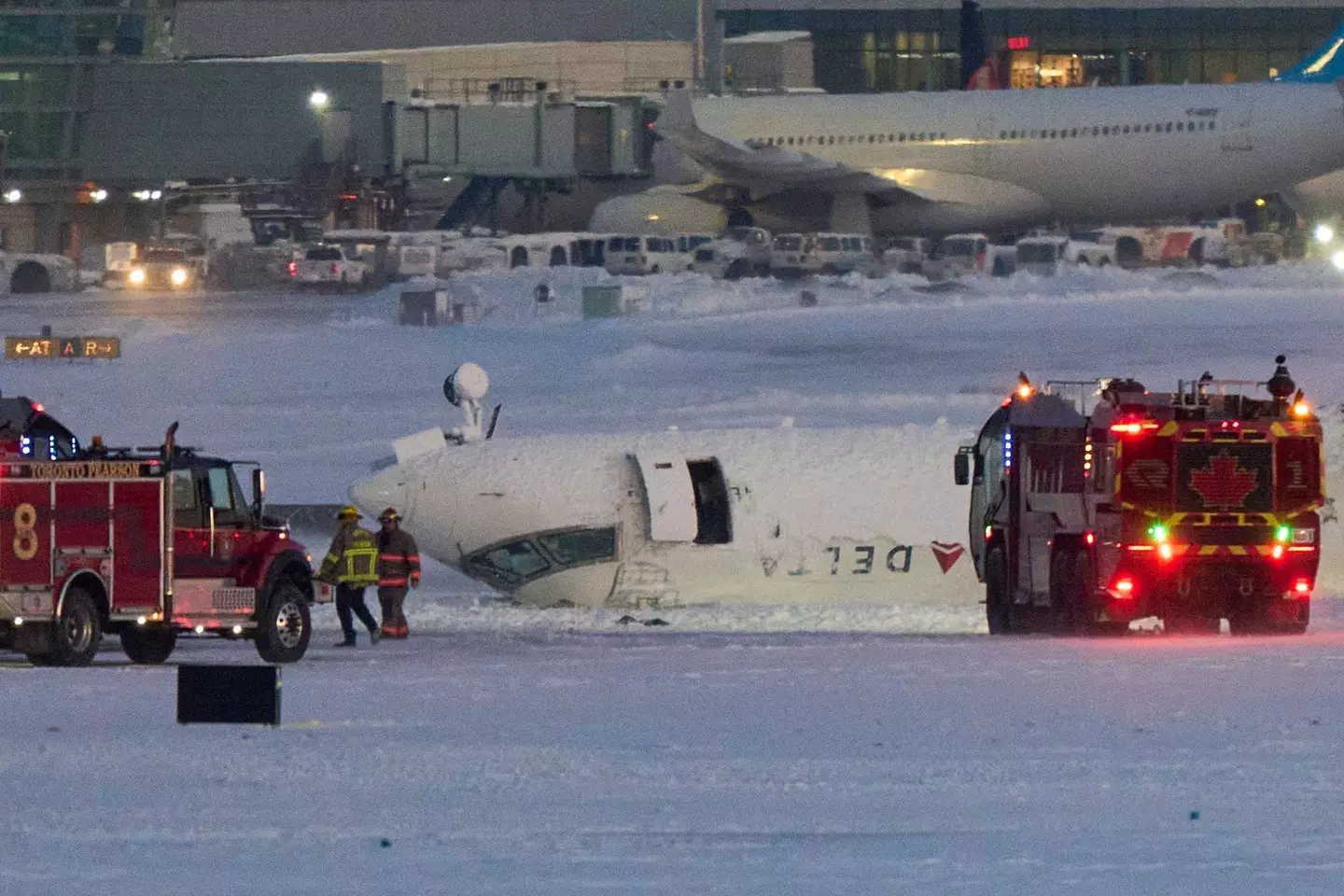

All passengers survived the crash (GEOFF ROBINS/AFP via Getty Images)
Everyone on board survived, with 18 passengers being taken to hospital for injuries.
Footage taken from the plane has been doing the rounds on social media, with survivors filming themselves in the wreckage.
Now, it has been revealed just how much money Delta Airlines is offering to every passenger who was on the aircraft.
According to a report by NBC News, each passenger is being offered $30,000 in compensation.
A spokesperson for the airline has said that this offer ‘has no strings attached and does not affect rights’.
This basically means that passengers will still be able to pursue further action even if they accept the cash.
A total number of 21 out of 80 passengers were injured in the incident and according to Delta, one person remains in hospital.
Speaking to The Associated Press, John Cox, who is the CEO of aviation safety consulting firm Safety Operating Systems in St Petersburg, Florida, said: “We’ve seen a couple of cases of takeoffs where airplanes have ended up inverted, but it’s pretty rare.”
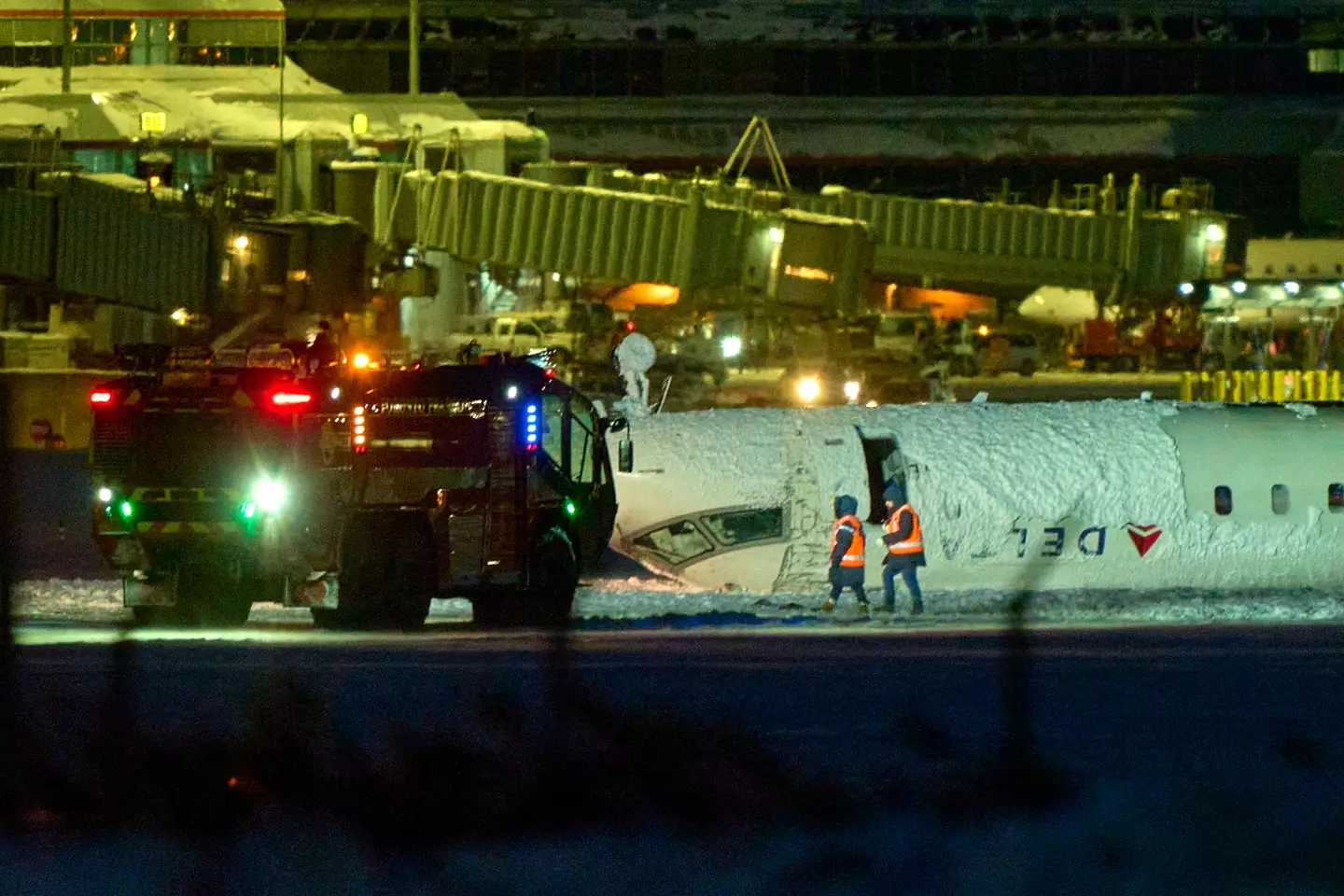

Passengers are being offered compensation (GEOFF ROBINS/AFP via Getty Images)
Deborah Flint, who is the CEO of Greater Toronto Airports Authority, spoke in a press conference where she said the people on board the crashed plane had ‘relatively minor injuries’.
She continued: “No airport CEO wants to have these types of press conferences but this is exactly what our emergency, our operations and our first responders are all practised and trained for.
“And again, this outcome is due in part to their heroic work and I thank them profusely.”
Peter Carlson, a passenger who was on board the plane, described the experience of being on board the plane as it rolled over on the runway.
Carlson spoke to CBS about passengers coming together and helping each other out of the wreckage.
He said: “All of a sudden everything just kind of went sideways and then next thing I know is kind of a blink and I’m upside down still strapped in.
“It sounded, I mean it was just cement and metal. What I saw was everyone on that plane suddenly became very close in terms of how to help one another, how to console one another.
“That was powerful, but there was a definite ‘what now, who’s leading, how do we find ourselves away from this?’”
An investigation into the crash and exactly what caused it is currently underway.
Featured Image Credit: GEOFF ROBINS/AFP via Getty Images


Shocking footage has revealed the aftermath of the Delta plane crash after it landed flipped upside-down.
The aircraft crash-landed in Toronto, Canada, after traveling from Minneapolis, Minnesota.
People were shocked to see images of the plane upside-down on the runway after battling a windy snowstorm.
And now footage has been published on social media which shows passengers leaving the plane.
In a post on Reddit, one user shared the clip of the aircraft on the runway.
All 76 passengers and four crew that were on board survived the crash, with 18 people being taken to hospital.
Other users took to the Reddit comment section to share their reactions to the footage that was captured.
One person wrote: “As bad as this is, the fact the fuselage held up and everyone was able to get out alive speaks volumes to the engineering of the aircraft.”
Another said: “If no one is hurt, pretty clear reminder why it’s important to wear a seat belt on a plane.”
A third user commented: “Any landing you can walk away from is a good landing.”
This sparked a reply from a fourth person who wrote: “‘Great landing, guys!’
“Usually I like walking on the floor to exit the plane, but hey… ceiling is good too, I suppose. Good landing, gents.”
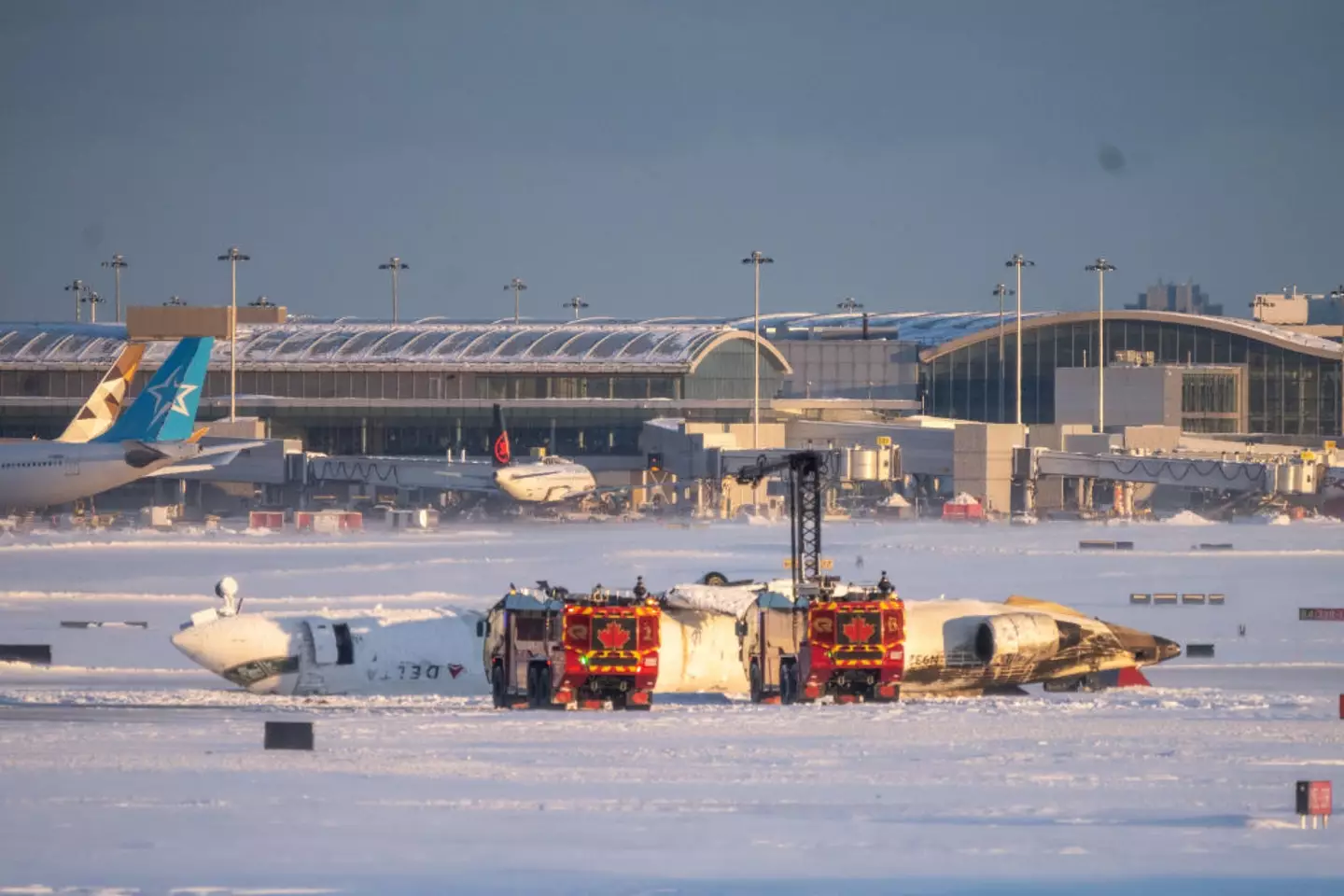

The flight crash-landed upside-down on the runway (Katherine KY Cheng/Getty Images)
And a fifth added: “I’m gonna have to start clapping when my plane lands now; since it’s apparently an achievement.”
Speaking to The Associated Press, John Cox, who is the CEO of aviation safety consulting firm Safety Operating Systems in St Petersburg, Florida, said: “We’ve seen a couple of cases of takeoffs where airplanes have ended up inverted, but it’s pretty rare.”
Deborah Flint, who is the CEO of Greater Toronto Airports Authority, spoke in a press conference where she said the people on board the crashed plane had ‘relatively minor injuries’.
She continued: “17 injured passengers were taken to local area hospitals. At this time, we do not know of any of those passengers having critical injuries.
“No airport CEO wants to have these types of press conferences but this is exactly what our emergency, our operations and our first responders are all practised and trained for,” she added.
“And again, this outcome is due in part to their heroic work and I thank them profusely.”
An 18th passenger has been taken to hospital since this news conference was held.
Ontario-based air ambulance service Ornge has also since revealed that a child, a man in his 60s and a woman in her 40s, are all critically injured.
Featured Image Credit: Katherine KY Cheng/Getty Images


A plane full of passengers was left stranded after air traffic controllers said ‘we’re going home’.
The Ryanair flight was due to travel from Malaga to Manchester when it diverted due to a medical emergency.
This involved a passenger being helped off the aircraft before the plane was expected to carry on to its destination.
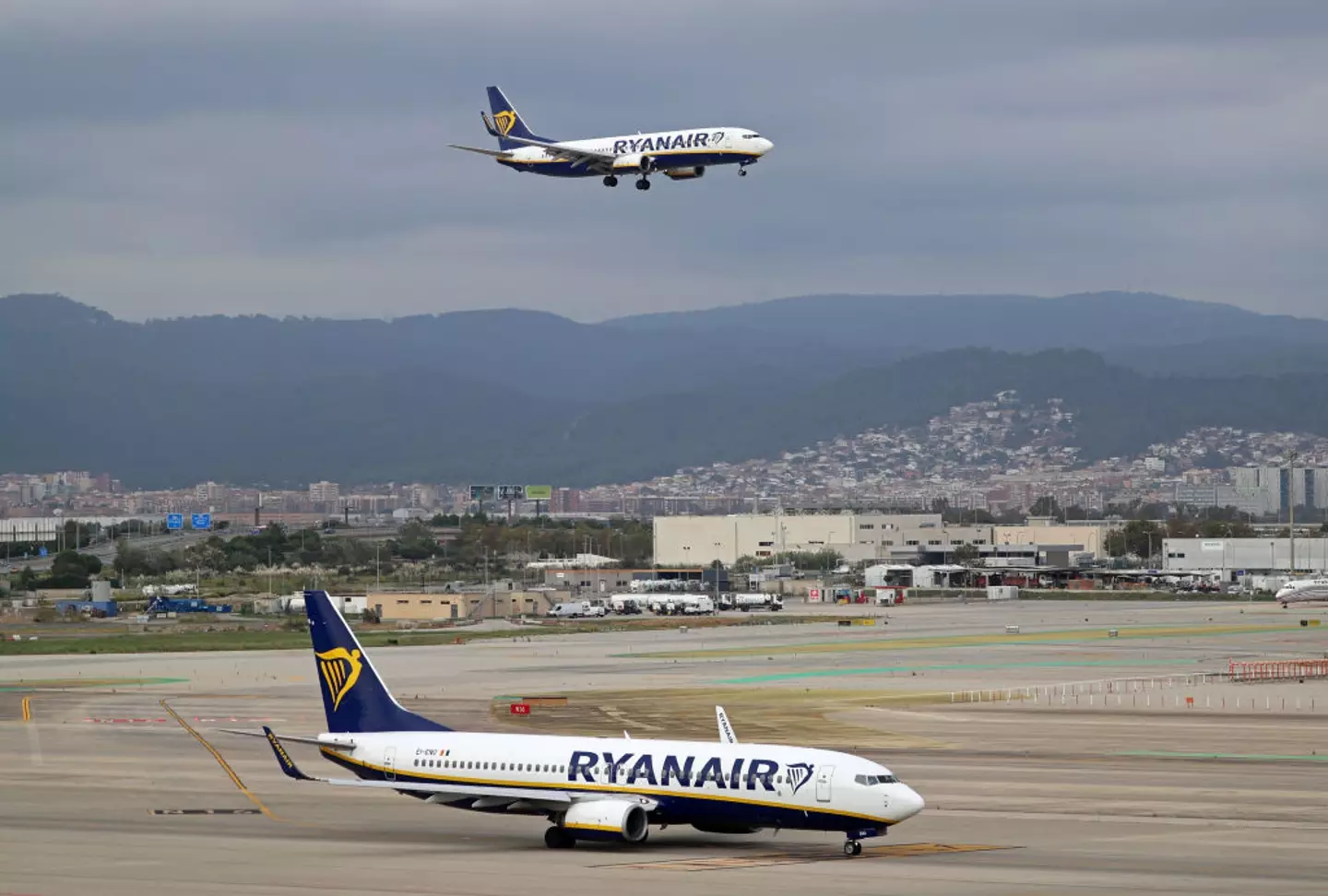

The Ryanair flight was diverted due to a medical emergency (Urbanandsport/NurPhoto via Getty Images)
However, things did not unfold as expected.
After the plane made its emergency landing in the northern Spanish city of Bilbao, it was refueled and preparing to take off for Manchester but the flight was unable to continue.
This is because air traffic control workers clocked off from their shifts, leaving the passengers stranded.
According to an airport spokesperson, this was because the flight plan ‘exceeded operational hours’.
One passenger, Sara Diggle, spoke to The Independent, claiming that air traffic control staff ‘refused to wait 15 minutes to see us off’.
Diggle went on to add: “They went home so we were unloaded, left high and dry to make our own arrangements for hotels.”
A spokesperson for the airport operator said: “I can confirm that the flight to Manchester departed on Sunday, at 13.01 local time. It didn’t depart the night before because the flight plan exceeded the operational hours of Bilbao airport.”
The plane finally arrived at Manchester Airport 14 hours later than it was originally scheduled for.
Recalling a previous experience, Diggle continued: “We unfortunately got diverted to Bordeaux last year after multiple medical issues on board so knew best to just make our own arrangements and not wait around a shut airport.
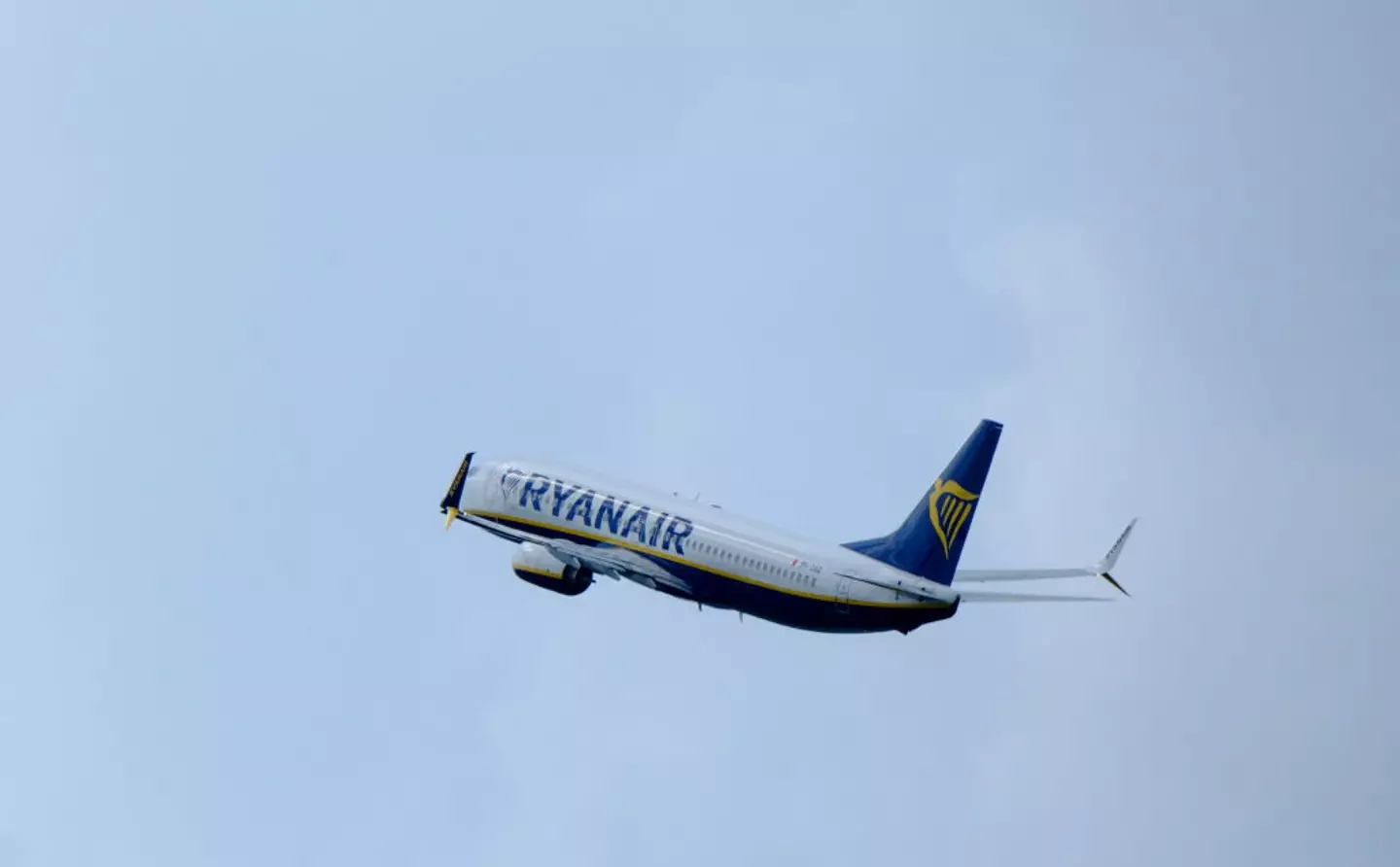

The flight finally arrived in Manchester 14 hours later (Thierry Monasse/Getty Images)
“There were no taxis, just ones arranged for the crew. We walked to the nearest airport hotel and checked in.
“I got a text at least to advise what time the flight would leave Bilbao. Others got nothing – I assume that’s because they didn’t register their mobile or didn’t book direct.
“The cabin crew were great – not their fault but were very empathetic to the passengers.”
A Ryanair spokesperson stated: “This flight from Malaga to Manchester diverted to Bilbao after a passenger became ill onboard. The aircraft was met by medics upon arrival and this passenger was offloaded and transported to a nearby hospital.
“Passengers were notified of the diversion and advised of their options. Despite Ryanair’s efforts to arrange accommodation for passengers, availability was limited, and passengers were advised that they could arrange individual accommodation that they could claim back receipted expenses on Ryanair.com.
“This flight departed for Manchester the following day.”
Featured Image Credit: Thierry Monasse/Getty Images


The MH370 pilot’s final and chilling message before the Malaysia Airlines plane mysteriously vanished, becoming the world’s most unexplained aviation incident.
The last words by the pilot were revealed in a documentary ten years after the aircraft went missing mid flight in March 2014.
First Officer Fariq Abdul Hamid was co-piloting the plane with Captain Zaharie Ahmad Shah during the flight from Kuala Lumpur International Airport in Malaysia, which was bound for Beijing Capital International Airport in China.
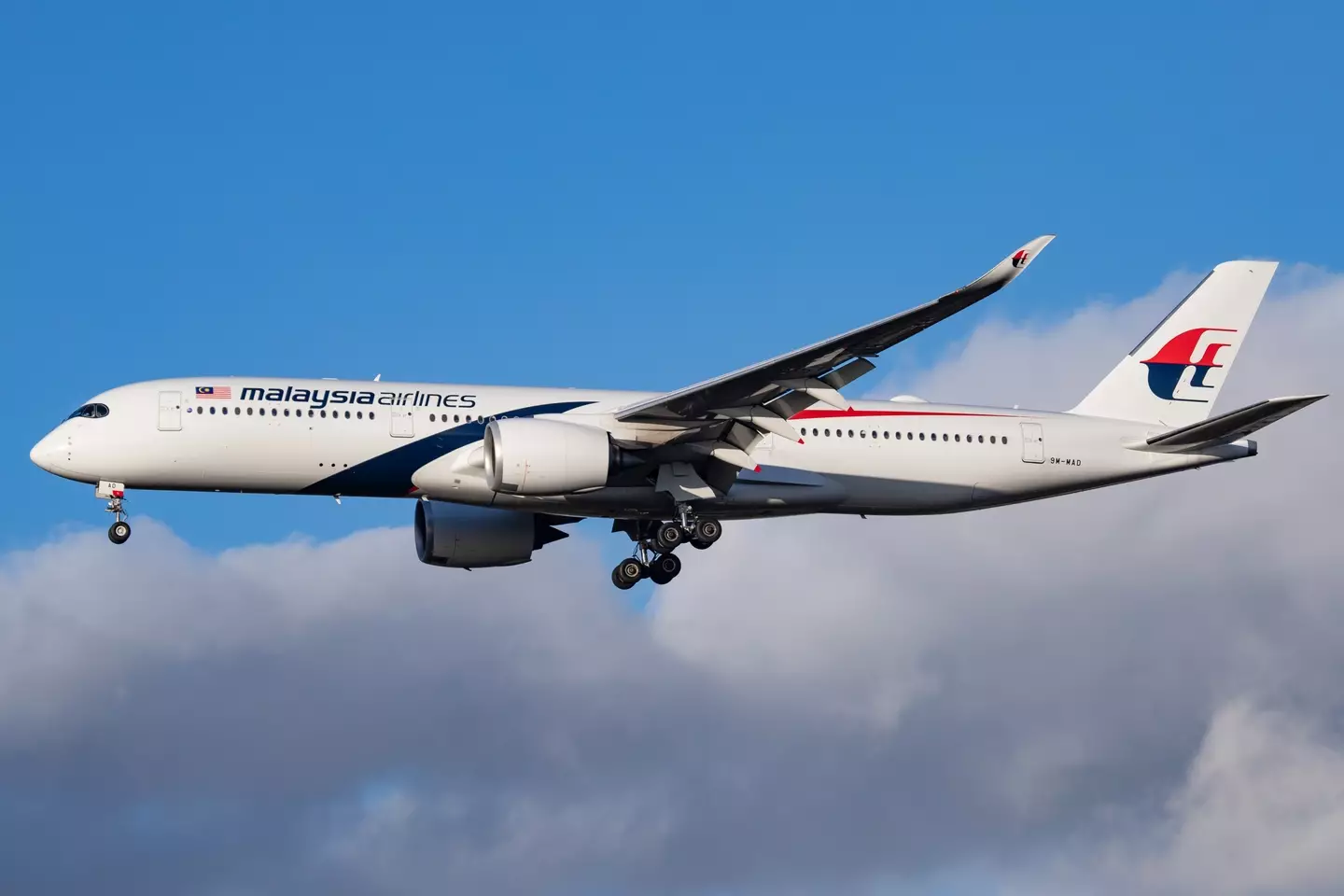

Air traffic control lost contact with the aircraft (Nicolas Economou/NurPhoto via Getty Images)
However, the plane never made it to Beijing and instead disappeared without a trace, with all 239 onboard presumed dead.
It was a mystery that shocked the world, with many sharing different theories as to what could have happened.
Air traffic control last communicated with the pilots around 38 minutes after takeoff while the plane was flying over the South China Sea.
After losing connection, the Malaysian military’s primary radar system was able to track the plane for another hour as it deviated off its route, flying westward. Its last known location was in Vietnamese airspace.
There were initial fears that the disappearance could be down to a terrorist attack but when that was ruled out, other possibilities were circulated.


Aerial searches were conducted for the missing plane (ATAR/AFP via Getty Images)
Some speculated that a fire had broken out in the cockpit or that the plane had been shot down.
Others wondered if the passengers were still alive after their cellphones picked up a dial tone when loved ones tried to call them.
Now, the final known words spoken on board have been revealed in the BBC documentary, Why Planes Vanish: The Hunt for MH370.
Around 12 minutes after the initial communication system went offline and just two minutes before the final transponder was deactivated, Mr Fariq was heard telling air traffic control, “alright, goodnight”.
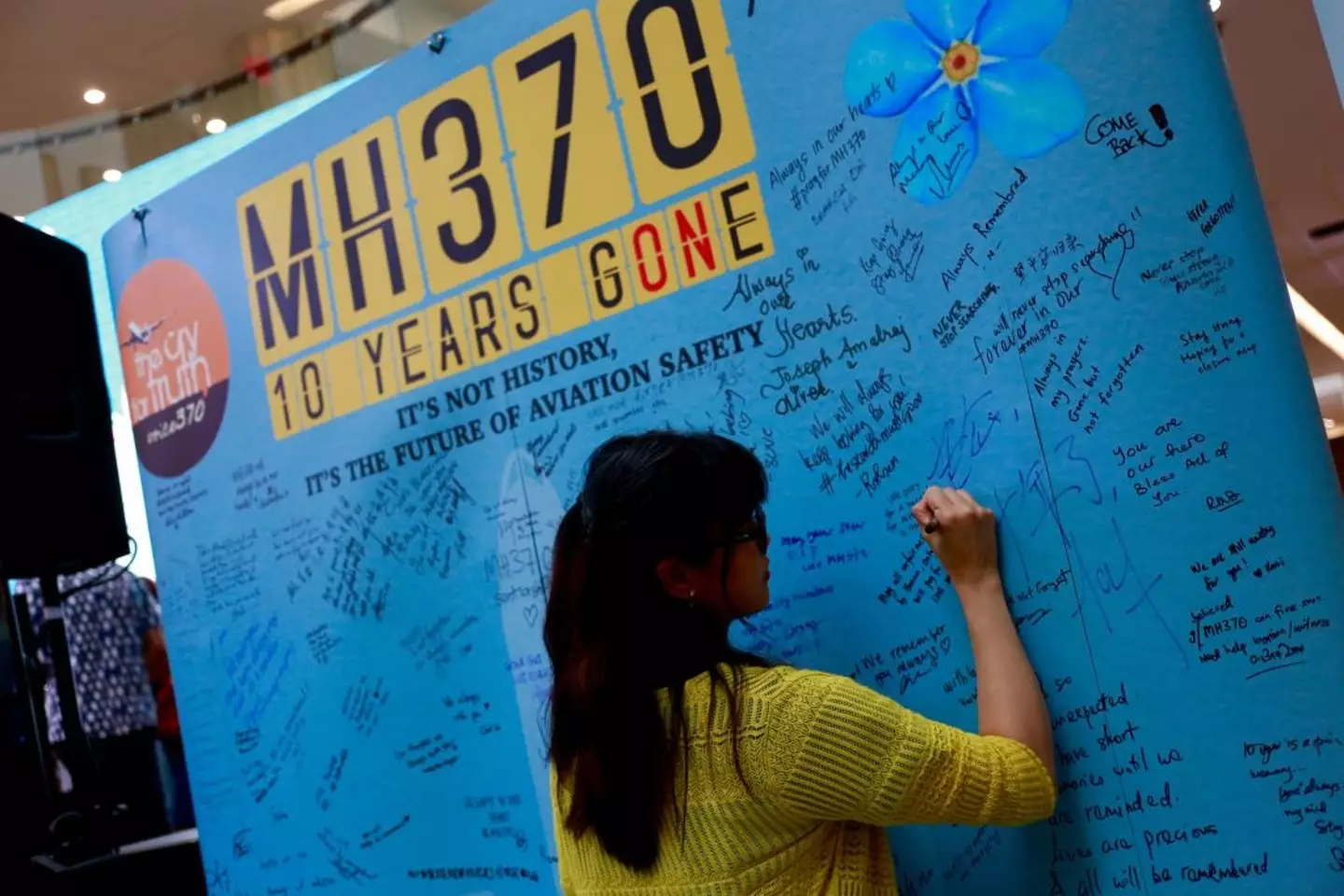

There is still a search for answers (Supian Ahmad/NurPhoto via Getty Images)
The eerie message would be the last thing anyone heard from the aircraft which disappeared shortly after.
What happened to the aircraft of flight MH370?
There has been some speculation that the flight’s disappearance could have been due to an act of mass murder-suicide by the plane’s captain, who was reported as supposedly having marriage problems.
Another theory is that the plane suffered a power interruption.
Other, less likely outcomes that some people have raised include the idea that the plane was consumed by a black hole or that a meteor struck the aircraft.
In 2017, pieces of debris that had washed up on beaches by the western Indian Ocean were identified as very likely or almost certainly originating from the missing aircraft.
Featured Image Credit: Nicolas Economou/NurPhoto/Supian Ahmad/NurPhoto via Getty Images


New light is being shed on the tragedy of the January 29 airplane collision above Washington D.C. between American Eagle flight 5342 and a US Military Black Hawk helicopter.
The crash led to the death of all 67 aboard both vehicles, with the bodies having now been recovered from the Potomac River.
According to the National Transportation Safety Board (NTSB), the flight recorder inside the American Airlines flight suggests it was cruising at about 325ft at the time of collision, with a 25ft margin of error on either side.
In contrast to this, data from the air traffic control tower reads that the Black Hawk was flying at around 200ft at the time of impact.
So far, there’s no explanation for the 100ft discrepancy.


The crash is the deadliest air disaster since 2001 (The Washington Post / Contributor / Getty)
Captain Rebecca M. Lobach, Staff Sgt. Ryan Austin O’Hara, and Chief Warrant Officer 2 Andrew Loyd Eaves were aboard the military craft on a routine training exercise, with the maximum altitude for helicopters in the area being 200ft.
The American Airlines flight reportedly made a last-minute attempt to avoid disaster, with the NTSB’s Todd Inman explaining: “At one point very close to the impact, there was a slight change in pitch, an increase in pitch.”
Brice Banning is leading the investigation and added: “The crew had a verbal reaction. Sounds of impact were audible about one second later, followed by the end of the recording.”
It’s hoped that flight data from the Black Haw’s black box can explain the differences. It was recently retrieved from the Potomac River, with investigators looking to decipher its own data. Two black boxes, the cockpit voice recorder, and a flight data recorder from the American Airlines plane have been taken to a lab for analysis, hoping that these will be more reliable than the ATC tower data.
This is said to be the deadliest US air disaster since 2001 and has grabbed headlines around the world. It’s also been fraught with controversy after President Donald Trump blamed diversity hiring for the crash.
Although investigators say there were five controllers on duty at the time of the crash (a local controller, ground controller, assistant controller, a supervisor, and supervisor in training), an FAA report seen by the AP said that staffing that day ‘was not normal’. One person was reportedly doing the job of two people at the time of the crash.
Transportation Secretary Sean Duffy has vowed to give federal aviation investigators the space they need to carry out the inquiry, although he claimed that “staffing shortages for air traffic control has been a major problem for years and years.” He concluded by saying that the Trump administration will aim to hire “bright, smart, brilliant people in towers controlling airspace.”
Although full NTSB investigations tend to take a least a year, investigators hope to have a preliminary report within 30 days.
Featured Image Credit: CNN
